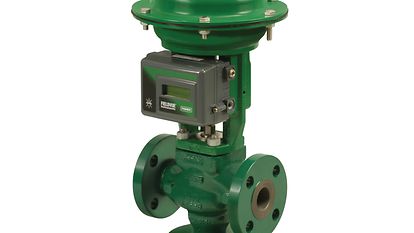
Maximize Energy Cost Savings and Comfort With Advanced Structure Automation Controls
In the realm of modern design and facility management, the assimilation of advanced structure automation controls stands as a crucial development. By utilizing the power of automation, buildings can adapt, react, and advance in ways that were when inconceivable.
Power Effectiveness Benefits
Power performance advantages can dramatically lower energy intake and functional expenses in buildings. By carrying out energy-efficient techniques and innovations, building proprietors and operators can attain substantial cost savings while likewise adding to environmental sustainability. One of the primary advantages of enhancing power performance in structures is the reduction of utility costs. Energy-efficient systems, such as sophisticated building automation controls, can optimize making use of resources like illumination, heating, and cooling, bring about lower energy expenditures gradually.
Additionally, boosted power efficiency can extend the lifespan of building devices and systems. By operating a lot more successfully, cooling and heating systems, light, and other structure components experience much less damage, leading to reduced maintenance and substitute costs. In addition, energy-efficient buildings frequently command greater property worths and rental prices, supplying long-lasting economic benefits to proprietors.
In addition, energy effectiveness can boost owner convenience and efficiency. Effectively regulated interior environments with optimal illumination and thermal problems create an even more pleasant and conducive work space, causing improved staff member contentment and performance. In general, the power effectiveness benefits associated with innovative building automation controls are diverse, incorporating expense financial savings, environmental stewardship, and occupant wellness.
Boosted Comfort Control
Enhancing convenience control in building settings requires an advanced integration of innovative automation systems for optimal resident health. By using innovative building automation controls, centers can customize the indoor setting to satisfy the certain demands and choices of occupants. control valves.
By incorporating these innovative controls, structures can not just boost convenience yet additionally enhance power efficiency by enhancing system procedures based on real tenancy and usage patterns. Inevitably, prioritizing passenger comfort through sophisticated automation systems leads to a much more delightful and much healthier interior setting.
Functional Performance Improvements

Moreover, the implementation of real-time surveillance and analytics tools enables building drivers to determine energy ineffectiveness and functional anomalies quickly. By constantly monitoring energy usage patterns and system efficiency metrics, adjustments can be made in real-time to optimize energy intake and guarantee peak functional performance. control valves. Furthermore, integrating need feedback methods into building automation controls can better enhance operational performance by dynamically changing energy usage based upon grid conditions and prices signals
Indoor Climate Optimization
Reliable interior climate optimization is a basic element of building automation controls, making certain residents' comfort and well-being while making the most of power savings. By utilizing sophisticated sensors and controls, constructing automation systems can continuously keep an eye on and change temperature level, humidity degrees, air high quality, and ventilation to create an ideal indoor atmosphere. Keeping consistent and comfortable problems not only enhances owner fulfillment but additionally improves productivity and total well-being.
Interior environment optimization also plays a vital role in power efficiency. By fine-tuning cooling, air flow, and home heating systems based on real-time information and occupancy patterns, building automation controls can significantly minimize energy usage - control valves. Executing methods such as demand-controlled ventilation and thermal zoning can help decrease energy waste while ensuring that each area of the building receives the needed conditioning.

Lasting Setting Creation
Building automation regulates not only optimize interior environment conditions for energy performance and occupant convenience yet also lay the foundation for developing a sustainable environment with calculated administration of sources and systems. By integrating sophisticated building automation modern technologies, such as sensors, actuators, and intelligent software, centers can adjust and monitor power use in real-time to minimize waste and lower their carbon footprint. These systems make it possible for anticipating upkeep, identifying potential concerns prior to they intensify and maximizing equipment performance to improve longevity and efficiency.
Moreover, lasting atmosphere development extends past energy administration to encompass water conservation, waste decrease, and interior air quality renovation. Building automation controls can manage water usage, discover leaks, and make sure appropriate garbage disposal practices, adding to total sustainability initiatives. In addition, by checking and controlling ventilation and filtering systems, these innovations enhance occupant health and wellness and productivity while reducing power intake connected with cooling and heating operations.
Conclusion
To conclude, progressed building automation manages deal significant benefits in regards to power cost savings, convenience control, functional efficiency, indoor environment optimization, and creating a sustainable setting. By executing these controls, structures can accomplish optimum performance while decreasing power usage and boosting resident convenience. It appears that making use of sophisticated automation modern technology is essential in improving structure performance and creating a more sustainable future.
Energy effectiveness YOURURL.com advantages can significantly decrease energy usage and operational expenses in buildings. Overall, the energy efficiency benefits connected with innovative structure automation controls are diverse, including cost savings, environmental stewardship, and resident wellness.
Furthermore, incorporating need feedback strategies into structure automation controls can additionally enhance functional effectiveness by dynamically changing energy use based on grid problems and pricing signals.
Structure automation manages not only maximize interior climate conditions for over at this website power efficiency and occupant convenience but also lay the structure for producing a sustainable setting with tactical monitoring of resources and systems.In conclusion, advanced building automation controls deal substantial advantages in terms of energy financial savings, comfort control, functional efficiency, interior climate optimization, and developing a sustainable setting.